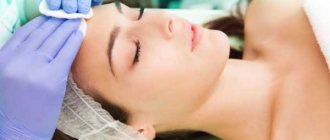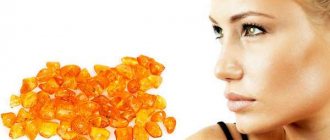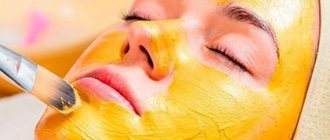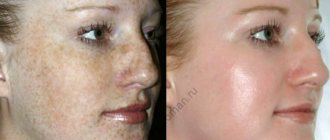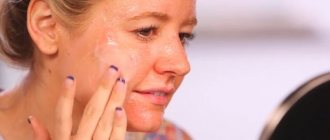Glycolic acid can exist in pure form or can be partially diluted. Peeling with glycolic acid in its pure form has a very strong effect and can even cause epidermolysis with serious consequences, so chemical peeling procedures using acid in this form must be performed very carefully and professionally.
The depth of the glycolic peel depends on
- the concentration used,
- pH,
- procedure time,
- the amount of substance deposited per unit surface,
- from combination with other substances
- and the condition of the skin that is undergoing the procedure.
The higher the acid concentration and lower the pH, the greater the power of the acid.
How many procedures are needed
To obtain the expected and lasting effect, it is necessary to perform a series of at least 4, and preferably 8 procedures with an interval of 14 days. This course of treatment can be repeated twice a year.
To reduce the risk of complications, the first treatments in a series should be at lower acid concentrations. Particular care should be taken with dry skin and prone to telangiectasia (dilated blood vessels). Chemical peels performed with glycolic acid are safe, and the risk of complications and side effects after it is very small (however, the higher the concentration of acid, the more the risk increases). With high acid concentrations and low pH, there is a risk of side effects, i.e. irritation, inflammation, pigmentation disorders, crusting, and even scars. Therefore, it is so important that the procedure is performed by professional cosmetologists. Diluted glycolic acid works more gently (of course, this depends on the proportions). The duration of the facial peeling procedure with glycolic acid is from 1 to 10 minutes.
Bionics has different concentrations and pH of glycolic acid, the most commonly used are: 35%, 50%, 70%, and their pH ranges from 1.6 to 0.6.
35% — 2.8 pH 45% — 2.0 pH 55% — 1.0 pH 70% — 0.5 pH
Of course, the choice of acid concentration is determined by the cosmetologist individually. At low pH, glycolic acid stimulates exfoliation and cell renewal; at higher pH, it only provides a moisturizing effect. Glycolic acid comes in two forms: gel (it works more gently, the acid is released gradually, is well tolerated by people with sensitive skin or acne), and causes only mild irritation. An aqueous solution of glycolic acid is very quickly absorbed by the stratum corneum of the skin. This form of glycolic acid peel is used for people who require intensive skin cleansing.
Glycolic facial peeling with a concentration of 20% and 35% is used for superficial exfoliation, the procedure should be repeated in several stages with an interval of 14 days. This type of peeling allows you to restore radiance and a fresh look to the skin (increases tone, elasticity, eliminates fine wrinkles and excessive dryness of the skin). It is also performed to thoroughly cleanse the skin.
And glycolic peels with a concentration of 50% and 70% exfoliate the deep layers of the skin, showing a strong and quick effect.
Due to the possibility of the appearance of age spots, peeling is not recommended in the summer. This type of peeling can be performed on people with any skin phototype, as well as people with dry and sensitive skin (of course, the concentration should be lower, the pH higher, a mild acid formula is also important).
Efficiency of use
The effect of smoothing and moisturizing the skin is noticeable immediately after applying Glyco A peeling. The cumulative effect appears after 2-3 courses of using the cream. You will have to wait 4-6 months. But this expectation is justified. Using Glyco A provides the skin with many benefits:
- reduces the thickness of the keratinized epidermis;
- improves appearance;
- tones and accelerates cell renewal;
- restores aging skin;
- increases elasticity, firmness and tension;
- stimulates collagen synthesis;
- smoothes wrinkles;
- removes age spots;
- improves the condition of dry skin;
- improves biodynamic properties.
Peeling is recommended for people aged 25 to 35 years. Belonging to this age range can ensure high effectiveness of the procedure aimed at preserving youthful skin.
Types of glycolic facial peels
Gliсopeel has an exfoliating effect - cleanses, adds shine, increases the synthesis of collagen, elastin and glycosaminoglycans (GAG), improves skin condition, reduces wrinkles, increases the permeability of the epidermis (helps the penetration of active components deep into the skin, treats acne, tightens pores, relieves acne symptoms, pigmentation spots;
GLICOPEEL Classic
Composition: 45% - partially neutralized glycolic acid. GLICO PEEL K
Ingredients: 33% - glycolic acid, 10% - kojic acid, 10% - citric acid, 9% - lactic acid, 5% - salicylic acid, epilobium, bearberry extract. Application: Optimal for people aged 25-30 with oily skin. Seborrheic dermatitis. Note. 6-8 procedures. Interval 14 days. You can't sunbathe, even covering your face. Recommended cream protection with SPF is 80. GLICO PEEL KH
Composition: 44% - glycolic acid, 10% - citric acid, 10% - lactic acid, 5% - kojic acid, 2% - hydroquinone, 3% - salicylic acid. Application: For the treatment of hyperpigmentation, as an intermediate peeling before mid-peelings. Note. 6-8 procedures. Interval 14 days. You can't sunbathe, even covering your face. The recommended protection of the cream with SPF is 80.
Indications for use
The list of indications for use of the cleansing cream suggests that this is indeed a “magic” product.
- age-related changes (wrinkles, loss of elasticity);
- photoaging;
- dry skin;
- psoriasis;
- keratosis;
- pigment spots on the face, hands, and décolleté;
- melasma;
- post-inflammatory and post-traumatic traces;
- chloasma;
- freckles;
- oily skin suffering from acne, comedones, enlarged pores;
- folliculitis;
- cellulite;
- stretch marks.
An impressive list of indications for use confirms the possibility of using cream peeling both on the face and on the entire body.
Advantages and disadvantages
Peels performed at home have a number of advantages over salon procedures:
- availability of purchase;
- Cream peeling can be used at home at any time, without worrying about making an appointment at the salon;
- the effectiveness of the drug, even taking into account the low dosage of acid;
- safe concentration of ingredients in creams for home use.
But there are also points that can alert inexperienced users of the peeling system:
- the use of chemical peels can damage the skin's melanocytes, leading to skin discoloration;
- possible skin infection;
- possible scarring;
- in rare cases, complications occur after the procedure - allergic reactions, swelling, erythema;
- high price.
Good news: it is quite possible to avoid unpleasant consequences or minimize risks by following the instructions for using the peeling cream.
Mode of application
Before use, it is recommended to cleanse the skin with a mild cleanser that has a neutral pH value.
The course of use of the product is 4 weeks. For the first two weeks, the drug is applied in the evening every other day, increasing the time of exposure of the cream. It is recommended to start at 1 hour. At the end of the second week, the peeling is left overnight. For the next 2 weeks, Glyco A is used every day. It is recommended to take a 30-day break between courses.
The best time for course application of peeling cream is from October to April. The use of scrubbing agents during the course is strictly prohibited.
Healing period
Using glycolic peeling at home does not exempt you from following post-procedure recommendations. On the contrary, attention to the condition of the skin should be increased to avoid undesirable consequences.
- The skin will be dry for several days, so it is necessary to apply a moisturizer. Coconut oil has good moisturizing properties.
- The use of additional exfoliating agents should be avoided for a week after the end of the course of application, since the top layer of the epidermis has already been removed.
- Excessive overheating of the skin should be avoided.
- Daily use of a high protection sunscreen is recommended.
- There may be some flaking, this is normal. The main thing is not to remove flaky skin and possible crusts on your own. Lubricate them generously with moisturizer and monitor for possible changes.
If there is even the slightest doubt about the correctness of post-procedural rehabilitation, then this is a reason to contact a cosmetologist or dermatologist.
Patient reviews
Patients note that the concentration of glycolic acid is insufficient for a visible effect. Although they note possible effectiveness for younger skin that has not previously been exposed to chemical peeling.
People who have used Glyco A note its sufficient moisturizing and anti-inflammatory properties and the absence of side effects. Reviews indicate lightening of age spots and post-acne marks after a course of use.
The best products with glycolic acid
The most popular drug is NeoStrata Alta Potencia made in the USA. This is a leveling cream-gel based on glycolic, lactobionic and citric acids. The product has an active rejuvenating effect on the skin, is allowed for use during pregnancy and lactation and is often used in professional beauty salons before carrying out tightening and firming procedures for the skin. Can be used in conjunction with other skin care products, enhancing their effect. The only drawback is the rather high price.
Acglicolic Liposomal Serum from the Spanish company Sesderma is no less popular. The product is known for containing only a small amount of glycolic acid, and its effectiveness is achieved through additional ingredients such as retinol, vitamins and soy extract. The drug has an oily base and, despite this, is well absorbed and can be used on other parts of the body, not only cleansing and moisturizing the skin, but also eliminating stretch marks and cellulite. Suitable for combination with other skin nourishing products.
Most acidic preparations are well absorbed and do not require rinsing.
Alfa-Peeling from the Spanish brand Martiderm is a peeling cream based on glycolic, malic, tartaric and citric acids. Thanks to this composition, the product not only perfectly cleanses the skin, but also has a comprehensive rejuvenating effect, smoothing the skin and brightening the tone, combats excessive thinness, eliminates age spots and helps in the production of beneficial collagen and elastin. The cream also contains marine collagen and a special DNA complex, which improve skin elasticity and eliminate wrinkles.
Acglicolic Classic Forte from the Spanish company Sesderma is an example of an ideal gel cream for combination skin, which protects it from dryness and excessive oiliness. The product contains not only glycolic acid, but also vitamin E and aloe vera. The desired effect is achieved through the correct combination of acidic plant extracts and the natural moisturizing factor of the drug. Acglicolic Classic Forte actively fights acne and other noticeable problems, often used in professional salons before acid peels and other procedures. It is quite an expensive drug.
Before applying the cosmetic product, you should thoroughly clean, steam and dry the skin to ensure ideal absorption of the product.
Finally, judging by numerous reviews of products, the top five most effective is Sebium Serum, a concentrate with an oily base, produced by the Bioderma concern in France. This is one of the most inexpensive products with a high content of glycolic acid. The drug perfectly disinfects the skin and is suitable against peeling. D-panthenol, which is part of it, has a softening and calming effect, and Fluidaktiv helps to quickly remove toxins to the surface.
Thus, the choice of facial care products containing glycolic and other acids is quite wide. It is extremely important to first test the product on the skin in a small amount to rule out an allergy to it. It is also worth first consulting with an experienced cosmetologist to get a recommendation regarding a particular product. One way or another, the required effect occurs no earlier than 2-3 weeks after using the drug.
Precautionary measures
Peeling cream is intended for external use. Contact with eyes should be avoided during application. If the product does get into your eyes, it is recommended to rinse them generously with cold water. If necessary, consult a doctor.
A tingling sensation and redness may occur. These symptoms are a sign of the cream’s action and disappear on their own after a couple of hours.
Contraindications:
- recent sun exposure to the skin;
- skin allergies;
- active herpes;
- pregnancy, breastfeeding;
- melanocytic nevus;
- autoimmune diseases;
- presence of wounds and abrasions in the area of planned use;
- severe forms of acne;
- taking certain medications (consultation with a doctor is required).
Important! Peeling cream Glyco A is phototoxic. Avoid exposure to sunlight on the skin for 2-3 hours after the procedure. When exposed to the sun, it is recommended to use sunscreen.

